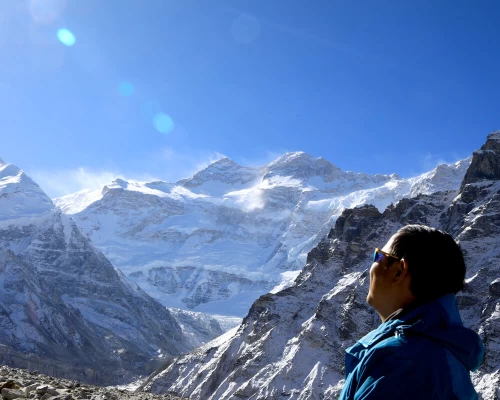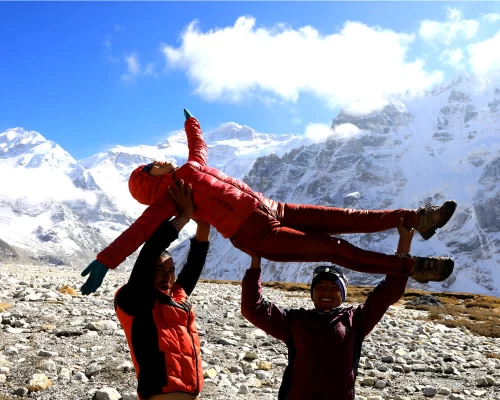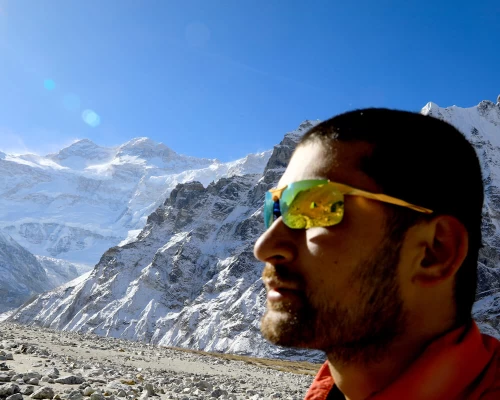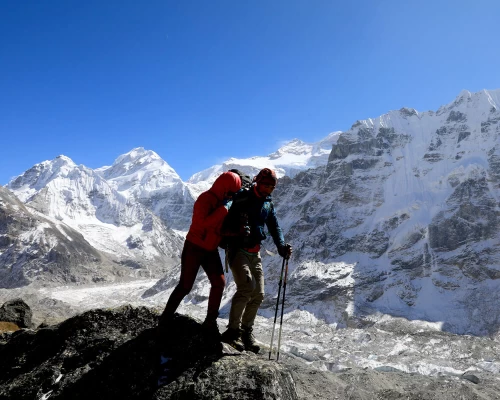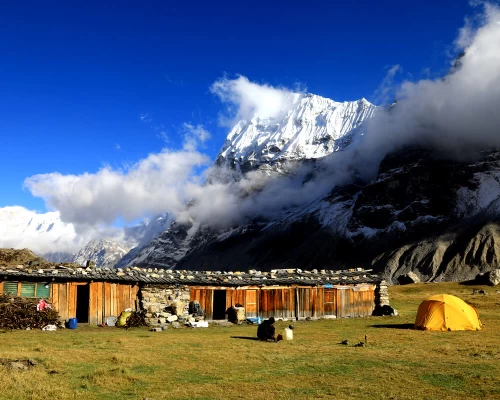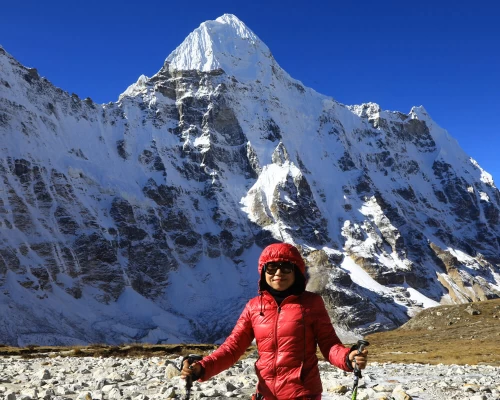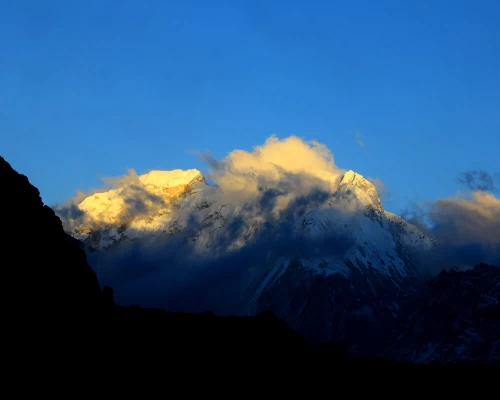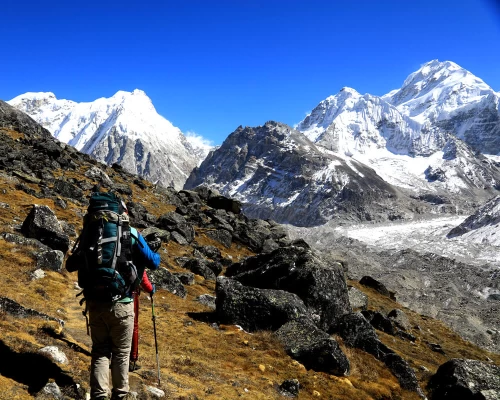Many people consider the Kanchenjunga North Base Camp Trek to be the most splendid of the Kanchenjunga treks. The trail climbs above valleys, gorges, and all settlements to reach the north face of the third-highest mountain in the world – Kanchenjunga(8,586 meters/28,169 feet). Along the remote trails beneath this behemoth of a mountain, it is possible you will walk for several days without seeing another trekker. It is a journey of pure peace as you wander through the remote alpine country of far eastern Nepal.
This adventurous trail offers the full-package Himalayan experience. We hike through wide valleys, narrow gorges, and rushing rivers. Ascending through lush rhododendron and bamboo forests, we walk for days among the glaciers and high alpine pastures. Our out-and-back trail ends at Kanchenjunga Base Camp (KBC) Pang Pema (5140 meters). Here, we have a jaw-dropping view of over 16 Himalayan peaks, including Everest (8848 meters), Makalu (8481 meters), Jannu (7710 meters), Kabru (7412 meters), and Tharpu Chuli (Tent Peak) (5663 meters), among many more.
To begin our memorable 16-day excursion, we take a night bus to Birtamod and drive to Suketar the following day. We trek through the lowlands and past terraced agriculture. Along the way, we visit Rai, Limbu, and Tibetan villages. These groups speak their own dialect and practice different religions and customs than most Nepali people. They greet us with their superb hospitality. Try a cup of Tongba, locally made hot millet wine. As you slurp the first cup down, you get more and more refills of hot water, which is soaked up by the fermented millet. Before we know it, we are in a desolate area, too high for any vegetation to live.
As for wildlife on the trek, we may encounter the impedance Pheasant, Red-Billed Blue Magpie, Himalayan black bear, Musk Deer, and even the Red Panda. Oh, and keep your eyes out for the legendary Yeti, known to have been roaming around the region.
We have listed this trek as a ‘camping trek’ because accommodations/general facilities on this trek are limited. During the main tourism months, most teahouses are open. It is up to you whether you would rather camp or stay in a teahouse. We will discuss these logistics with you.
NOTE: If you would like to skip the night bus and fly to Biratnagar and take a shorter drive to Suketar, we can arrange this for an additional cost.
Trekking is possible throughout the year, but Spring (March to May) and Autumn (September to November) provide the best weather. During the Spring, there is a bit more color and the rhododendrons are blooming, and in the Autumn months, the skies are generally clearer. Depending on the time of the year that you make the trek, teahouses may not be open. We will give you the details before you book your trek. The Kanchenjunga North Trek requires moderate fitness and acclimatization to avoid acute mountain sickness. Breeze Adventure arranges the trek with complete management. Please, feel free to contact us for more detailed information.



